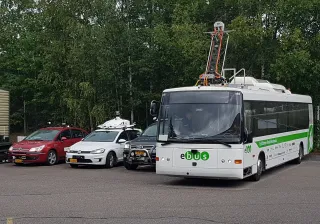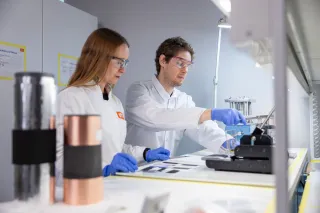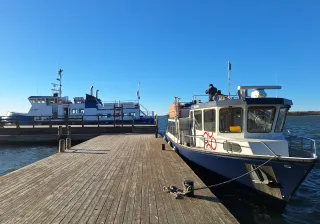Maybe because I grew up in rural Finland, I’ll always remember moving to Helsinki and standing at bus stops to go to and from university. Who could forget breathing in that black belching exhaust or listening to the ear-splitting roar of buses and trucks rumbling past? I used to think, someone’s got to do something about this. At the time I didn’t know it would be me.
Now two decades later, city transit systems all around the world are gearing up for an electrified future, with their sights on cleaner air, quieter communities, and more energy efficient services.
Why electrify?
To comply with policies at state or regional level, cities of all sizes around the world are grappling with air-quality problems and the need to meet low or zero emission requirements in urban transport. For most that means re-thinking their vehicle operating systems. And at VTT, we have the tools and knowledge to help make this happen.
For the last ten years, VTT has been hatching a science-based, flexible simulation tool to help city transport authorities, operators and planners jump into a cleaner future that can be tailored just for them. Although our solution can be applied across the urban transport sector to any types of vehicle fleets, public or private, we’ve chosen bus electrification as a relevant place to start.
Going the electrical bus route means more than just buying buses
You might think that installing a city-wide fleet of electric buses would be just a matter of ordering some new buses and driving them off the factory floor. But it’s more than that. It means changing the supply chain of energy with a network of chargers as the grid connection point, and requires a system solution that is both technical and economical.
To start with, city decision-makers need to ask themselves, what kind of electric buses? There are a lot of OEM manufacturing offerings to be considered. Then there is the electricity charging. What kind of charging solutions? How will they be operated, and by whom? Where will they be located and what is their rated power? How much time will the bus schedules allow for charging, and where and when?
Electric vehicles consume a certain amount of energy per kilometre and can operate in a certain range depending on several parameters such as the size of the bus, the passenger load, temperature and driving conditions. Transit systems or operational planners also need to factor in transport demand, traffic congestion rate, the average speed of the buses and even the topography of the city, among many other things, to arrive at a route, schedule or an operative scenario. For electric buses all these affect the system choices: the size and type of battery, energy management and charging.
VTT Smart eFleet toolbox ready to go
Perhaps because VTT is a research hub, people don’t necessarily realise we have a product-ready design solution that can to jump into any city, anywhere in the world and tackle these urban challenges.
The way it works is that we can take various open source city data inputs like bus scheduling; bus routes; street maps; or transport network maps and start modelling and simulating solutions. Our team has already been working for a while now with the Helsinki Transport Authority as a development partner, analysing their transport system and exploring methodologies and alternatives for electrification of the bus transit.
We also recently took on a project with the city of Santiago, Chile, where the scale significantly increased. Helsinki has a fleet of 1400 buses, while Santiago with its 7 million population, has about 7000 buses in their system. This showed that our approach can ramp up to any size parameters and regional variables while still being capable of exploring the transition to electrification in great detail. The toolbox can also take on projects of any size from a simple feasibility study to creating an entire passive simulation of an entire city. This is ultimately with a view to offering cities the best techno-economic strategy for them that brings value to the whole community.
Nowadays in Helsinki, when I’m out waiting for the bus with my three school-aged children, I like to point out electric buses when they go by. They’re almost soundless and very clean, with zero tailpipe emissions. My kids have learnt to identify the sticker on the side of the bus that shows it’s electric. And on days on their school run when they get an electric bus, they’re always excited to tell me.
It’s just one ride, but still a big move forward.






